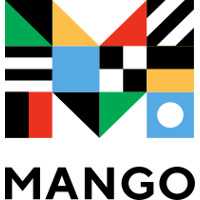Best Apps To Learn Japanese In 2023 (Native Speaker Opinion)
 Written byIchika Yamamoto
Written byIchika Yamamoto- Read time18 mins
- Comments3

If you’re looking for apps to learn Japanese, look no further.
Whether you intend to travel to Japan, watch anime without subtitles, study for the JLPT, or brush up on your Japanese literacy, you can be sure there’s an app to help you.
In the past, resources for learning Japanese were limited.
These days, however, there are tons of free and paid apps that can help you master Japanese incredibly quickly.
In this guide, we’ll provide an overview of the top Japanese apps available to try. Some of these apps provide full courses for the Japanese language, and other apps focus more on reading and writing Japanese, or improving your Japanese vocabulary.
Read on to discover the best apps for Japanese language mastery whether you’re already familiar with the language or a complete beginner.
Table Of Contents
DISCLAIMER: The comments below are personal opinions.
Japanese course apps
If you want to learn Japanese from beginning to end like you’re taking a class, then you should select a Japanese course app.
In most cases, these apps are provided by companies that also offer courses in other languages, and they vary in terms of quality and thoroughness.
Let’s examine some of the best Japanese course apps on the market.
Rocket Japanese

This Japanese course from Rocket Languages is one of the most comprehensive full-course Japanese language apps in this section.
Rocket Japanese might be the best app to learn Japanese if you want to be carefully guided through the learning process, but this app is somewhat more expensive than its competitors.
Pros/cons: Rocket Japanese features impressive dialogue sections that help you prepare for speaking Japanese with native speakers. This app also includes gamification features and leaderboards that inspire you to do your best. Unfortunately the Rocket Japanese community/forum could be more active and they could improve the course a lot by adding video.
Pricing: Rocket Languages offers its language courses in tiers. Tier I Rocket Japanese costs $99.95, Tier II costs $249.90, and Tier III costs $259.90. Rocket Japanese is offered as a one-time purchase instead of as a subscription.
Join The Guild by clicking here, select Japanese and I’ll send you a unique offer for Rocket Japanese exclusive to my readers only.
See this Rocket Japanese review.
UPDATE: If you ‘Join The Guild’ and select Japanese as your language, you’ll receive a unique discount offer only available to readers of this site.
Mondly

Mondly is a unique language app that incorporates augmented reality (AR) and virtual reality (VR) components.
While Mondly is one of the most intriguing full-course Japanese apps, some of its features seem unnecessary, and this app focuses mainly on low-level language learning.
Pros/cons: You might find it easier to learn Japanese with an AR teacher in your office or when you’re fully immersed in a VR cafe setting. This type of learning isn’t for everyone, however, and certain aspects of this language app, such as its chatbot, seem more gimmicky than useful.
Pricing: There is a free version of Mondly, and paid subscriptions start at $9.99 per month. You can also purchase an annual Mondly subscription for $47.99.
JapanesePod101

This Japanese-specific language learning platform is offered in bite-sized podcasts that are designed to help you with basic language comprehension and boost your Japanese vocabulary.
JapanesePod101 also helps you memorize vocabulary using flashcards.
Pros/cons: JapanesePod101 offers a unique approach to learning Japanese that’s perfect for casual students of this language. This app isn’t as feature-rich as some of its direct competitors, however.
Pricing: JapanesePod101 offers quite a few different subscription tiers that cost between $8 and $47 per month. Price discounts are offered when you purchase three-month, six-month, one-year, or two-year subscriptions. A free version of JapanesePod101 is also available.
See this JapanesePod101 review.
UPDATE: Use code MEZZOGUILD for a 25% discount.
Mango Languages

The design of the Mango Japanese course is beautiful and it allows you to switch between literal and understood translations. It color codes words and lexical chunks to match the English translation which is great for visual learners.
Pros/cons: A very unique, research-based approach to learning Japanese. In addition to Japanese, along with their monthly subscription, you get access to courses in 700 languages. Unfortunately, it isn’t in-depth enough.
Pricing: $7.99 a month.
Busuu

Busuu won German publication DtGV’s Best Language App 2018 award, and some evidence suggests that spending 22 hours using this full-service language app is equivalent to attending a college-level language class for a full semester.
This app provides official certificates when you reach certain mastery levels, and it includes Japanese writing, reading, and speaking sections.
Pros/cons: The Japanese courses that Busuu offers are well-structured and easy to follow. While this app isn’t incredibly rigorous, it uses contemporary teaching tools to provide you with a detailed grasp of the Japanese language. The free version of Busuu, however, is relatively limited in its scope.
Pricing: A free version of Busuu is available, and the paid version of this language app costs $69.99 per year. You can also purchase a two-year subscription that costs $119.99.
See this Busuu review.
Duolingo

In our view, Duolingo is one of the top Japanese apps on the market if you want to learn this language for free.
While Duolingo offers many of the same features as paid rivals like Busuu and Rosetta Stone, this app’s free version is almost as robust as its optional paid subscription.
Duolingo’s Japanese course is relatively robust, but it isn’t as strong as this app’s Spanish or French courses.
Pros/cons: You can easily get by with the free version of Duolingo. If you want to get rid of ads and store your lessons offline, however, there is a paid version of the Duolingo app. Duolingo offers less Japanese course material than some of its competitors.
Pricing: Duolingo is free, but you have the option of paying $12.99 per month or $79.99 per year for the paid version of this language app. In addition to offering offline lesson downloads, the paid version of Duolingo removes mobile app time restrictions.
See this comparison between Duolingo and Memrise.
Lingodeer

Lingodeer is a language app that focuses primarily on East Asian languages.
This app offers diverse lessons that are divided by topic, and Lingodeer features comprehensive explanations of the Japanese alphabet, Japanese grammar, and other nitty-gritty details you’ll need to understand if you want to become a Japanese language master.
Pros/cons: While Lingodeer is one of the most in-depth language apps you can use if you want to speak Japanese like a native, this app isn’t as organized or clear as mainstream alternatives like Duolingo. At the same time, Lingodeer is significantly less expensive than its main competitors, and it offers an impressive wealth of knowledge.
Pricing: There used to be a free version of Lingodeer, but this app now costs $11.99 per month. You can access Lingodeer for a full year, however, for only $55.99, and Lingodeer even offers a lifetime membership for $119.99.
Rosetta Stone

Long considered the gold standard of language learning apps, Rosetta Stone still has a lot to offer in 2020.
Whether you choose to access Rosetta Stone Japanese on a desktop or mobile device, this app offers an intuitive, polished user interface, and Rosetta Stone’s lessons are clear and comprehensive.
Pros/cons: Rosetta Stone is the most professional app you can choose if you want to gain a full grasp of the Japanese language within three months or less. This full-service language course is relatively expensive, however, and a single course level is offered to all students with no placement test.
Pricing: You can try Rosetta Stone for three months for $35.97, or you can purchase a one-year subscription for $170. A two-year subscription costs $249, and lifetime access costs $299.
See this Rosetta Stone review.
Japanese reading and writing apps
Japanese course apps usually provide information on how to read and write this language, but written Japanese is incredibly complex.
The Japanese written language is comprised of three different sets of symbols, and even many native Japanese speakers don’t have a full grasp of kanji, the most complex Japanese symbol set.
Use the apps in this section to master the art of reading and writing Japanese:
Waygo

Waygo is an app that can help you boost your Japanese reading comprehension.
This app operates either online or offline, and it uses your smartphone’s camera to instantly translate Japanese writing.
Pros/cons: Theoretically, you could start depending on Waygo to translate Japanese text for you instead of properly learning this language. When used properly, however, Waygo is a great tool for checking Japanese words that you don’t understand.
Pricing: There is a free version of Waygo with limited features. You can also buy the full version of this mobile app for $7.99.
Yomiwa

While Waygo is a good general Japanese translator, Yomiwa focuses specifically on providing accurate translations of kanji.
Similar to Chinese pictograms, kanji are incredibly complex Japanese characters that can have multiple meanings. Yomiwa also features a robust Japanese dictionary.
Pros/cons: While Yomiwa is an incredibly feature-rich app that can dramatically improve your Japanese reading comprehension, the free version of this app is very limited in its scope. Unlimited handwriting recognition, for instance, is only offered with the paid version of this app.
Pricing: You can Try a limited version of Yomiwa for free. The full version of this app costs $8.99.
Write It! Japanese
Write It! Japanese is a great tool for learning how to write Japanese characters.
Whether you want to memorize the stroke order of hiragana or katakana characters or you want to start writing full sentences in Japanese, Write It! Japanese offers a little bit of everything.
Pros/cons: Write It! Japanese is one of the cheapest Japanese writing apps available, but it doesn’t help you learn kanji.
Pricing: A free version of Write It! Japanese is available, and the full version of this app costs $6.99.
Japanese Alphabet Writing
Like Write It! Japanese, Japanese Alphabet Writing allows you to trace Japanese characters with your finger and provides feedback on your progress.
This app helps you learn how to write both kanji and hiragana.
Pros/cons: While it’s nice that Japanese Alphabet Writing includes kanji, this app is made by a small developer, and it’s relatively prone to bugs.
Pricing: You can try Japanese Alphabet Writing for free, and the full version costs $8.99.
Japanese speaking apps
Speaking Japanese isn’t quite as complicated as speaking Chinese, but it still takes years of practice to intone Japanese syllables properly and sound like a native speaker.
Even though you’ll start out with a ludicrously recognizable “gaijin” accent, the following apps will help you speak Japanese well enough to be comprehensible whether you’re placing an order at a ramen shop or asking for directions in Shinjuku:
Pimsleur

Pimsleur is a full-course Japanese language app that focuses primarily on hearing and speaking this language.
While this app is a little pricey, it helps you pronounce Japanese words properly and provides constant feedback.
Pros/cons: Since it focuses so heavily on teaching you how to comprehend spoken Japanese and speak Japanese like a native, Pimsleur is ideal for preparing for living in Japan or speaking Japanese on a daily basis. However, this app tends to teach you the most formal ways of saying things, which might lead to awkward conversations.
Pricing: The subscription version of Pimsleur Japanese costs $19.95 per month. Pimsleur also offers lifetime licenses for its Japanese courses for between $230 and $550.
See this Pimsleur review.
Poro
Poro helps you learn how to comprehend and speak Japanese by displaying syllables on-screen that you then read out loud.
This app offers multiple speaking speeds to suit your experience level.
Pros/cons: Poro is made by an independent developer, so it is relatively prone to bugs. At the same time, this app is inexpensive, and it offers many of the same features as pricey options like Pimsleur.
Pricing: You can use Poro with ads for free, and the full version of this app costs $2.99.
FluentU

FluentU is a unique language app that takes videos in Japanese and provides annotated captions to help you comprehend spoken Japanese in natural contexts. This app helps you speak Japanese better by understanding how Japanese words are used contextually.
Pros/cons: While FluentU can be useful in the right context, this app doesn’t provide any specific curriculum structure. On the contrary, you simply learn as you go, which might not be the right approach for some aspiring Japanese speakers.
Pricing: A free version of FluentU is available. Otherwise, this app costs $8 or $18 per month.
See this FluentU review.
Japanese tutoring apps
Sometimes, the best way to learn a language is to simply start conversing with a native speaker.
Whether you’re looking for a formal tutoring experience or you’re on the hunt for an instant-message “pen pal,” there are plenty of apps out there that hook you up with native Japanese speakers for multilingual chats.
Check out the following apps if you’d rather hone your Japanese language skills by striking up a genuine conversation:
italki

italki features an incredibly large pool of potential teachers, and Japanese tutors on this platform usually charge less than tutors who work for competitors.
The italki app is easy to use, and it has both desktop and mobile versions.
Pros/cons: In addition to offering tutoring services, italki also provides writing checking services that you can use to boost your Japanese writing skills. One of the only drawbacks of this platform is its payment model. To pay tutors on italki, you first need to load funds into your italki account, which adds an annoying step to the process of connecting with your tutor.
Pricing: An average Japanese tutor on italki will charge between $10 and $30 per lesson.
See this italki review.
Wyzant
Wyzant is another excellent app for finding Japanese tutors.
The pool of available tutors is less than italki, but they are competitively priced.
Pros/cons: Wyzant’s Japanese tutors are competitively priced but the app isn’t as well-known as italki, so the community is much smaller (including available Japanese tutors).
Pricing: Prices vary.
LinguaLift

LinguaLift is a full-course Japanese language program that focuses heavily on tutoring.
As you progress through LinguaLift’s course material, a tutor will assist you with areas that you don’t understand.
Pros/cons: While LinguaLift is one of the most comprehensive Japanese language tools on the market, it is also one of the most expensive options available. Tutoring plays a big role in LinguaLift’s curriculum, but you might want to connect with a tutor directly if you aren’t interested in the additional course material that LinguaLift offers.
Pricing: LinguaLift costs $14 per month or $99 per year.
See this LinguaLift review.
Tandem
Tandem is a tutoring platform that pairs you with a native Japanese speaker who is an ideal match for your language-learning goals.
Since it’s similar to a social media service, Tandem is also useful if you want to make personal connections with Japanese speakers.
Pros/cons: Even the free version of Tandem has a lot to offer, and this platform is very active, so it’s easy to find language partners. Tandem also includes a lot of features aside from tutoring, however, which you might not find to be particularly useful.
Pricing: Tandem costs $6.99 for a single month, $3.99 per month with a three-month subscription, or $2.92 per month with an annual subscription.
See this Tandem review.
Verbling
Verbling takes a more traditional approach to tutoring.
This app contains a vast database of Japanese tutors, and you can view important information like each tutor’s reviews and number of completed lessons. With Verbling, you pay per language lesson.
Pros/cons: While Verbling is a relatively active platform, it doesn’t have as many tutors as some of the newer tutoring apps. The tutors that Verbling employs, however, are highly knowledgeable, and the cost per lesson is reasonable.
Pricing: Each Japanese teacher on Verbling charges a different fee. Mari, for instance, who has nearly 2,000 positive reviews, charges $34 per lesson.
Japanese vocabulary apps
Whether you already have a rudimentary grasp of Japanese or you only need to know a few words in this language to get by, Japanese vocabulary apps can help you increase the number of Japanese words you know without any conversations or coursework.
Use the following apps to brush up on basic Japanese phrases and impress your friends with your basic multilingual knowledge:
Drops

A very well-designed app for teaching you Japanese vocabulary, Drops is a rising star with lots of promise.
Pros/cons: Despite it’s beautiful interface, it’s quite simple in what it does and the may be a little too high-priced for a simple vocab trainer.
Pricing: $5 a month (annually) or $8.50 a month. $150 for a lifetime membership.
Learn Japanese
This basic vocabulary app includes over 800 common Japanese words and phrases that are separated into basic categories like dining, greetings, and romance.
These phrases are stored offline, so you can use Learn Japanese even when you don’t have an internet connection.
Pros/cons: This app provides you with a simple grasp of the most common phrases you’ll come across when conversing with a native Japanese speaker. As some reviewers have pointed out, however, the translations that Learn Japanese provides aren’t always entirely accurate.
Pricing: A free version of Learn Japanese is available, and a full version is offered for $4.99.
Tae Kim’s Guide to Learning Japanese
Tae Kim’s Guide to Learning Japanese is a completely free app that helps you learn Japanese by mastering basic vocabulary.
In addition to vocabulary lessons, Tae Kim’s Guide to Learning Japanese also includes lessons on verbs, kanji, and other subjects.
Pros/cons: As a vocabulary app, Tae Kim’s Guide to Learning Japanese is near-ideal. Compared to paid Japanese course apps, however, this simple guide doesn’t offer very many features.
Pricing: Tae Kim’s Guide to Learning Japanese is 100 percent free. This app doesn’t even include any ads.
How to choose the best apps for learning Japanese
Determining the best app to learn Japanese really depends on each aspiring Japanese speaker.
If you just want to learn enough Japanese to order sushi for instance, then a basic vocabulary guide might be all you need.
If you plan on immersing yourself in Japanese culture, however, you’ll need to select apps for Japanese that fully prepare you for speaking, reading, and writing this foreign language on a daily basis. To get started, I suggest that you pick a free app that provides a basic overview of the Japanese language. From there, you can consider investing in a full paid course and Japanese textbook that will help you develop a firm grasp of Japanese.
There’s no single app that will make you a Japanese expert overnight, but each of the apps I’ve shared in this guide can bring you closer to your goal of learning Japanese.
Know of an app for learning Japanese that I didn’t mention?
Share it below in the comment section.
 Grab the link to this article
Grab the link to this article